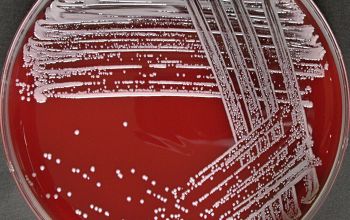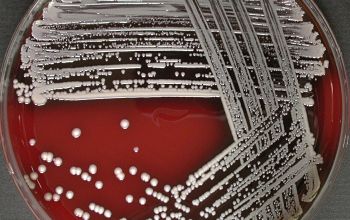Staphylococcus lugdunensis
-
General information
Taxonomy
Family: Staphylococcaceae
Natural habitats
In humans they ranges from a harmless skin commensal to a life-threatening pathogen
Clinical significance
S. lugdunensis can cause a variety of infections, including endocarditis, skin and soft tissue infections, osteomyelitis, and prosthetic device-related infections.
It is known for its potential to cause severe, invasive infections similar to S. aureus.
Early detection and appropriate treatment are critical due to its virulence and ability to develop antibiotic resistance.
Is repeatedly CNS, in pure culture or in mixed culture isolated from the material, then this confirms the presence of an infection.
The correct identification of CNS is necessary in order to get an idea of the pathogens in this group.
-
Gram stain
Gram positive cocci,
0.6-1.3 µm
that occur in irregular grape-like clusters and,
less often, single and in pairs, tetrads, and in short chains.
-
Culture characteristics
-
Facultative anaerobic
BA: medium to large; smooth, glossy, entire edge with slightly domed center; nonpigmented or cream to yellow-orange, may be β-hemolytic
McConkey: growth
BBAØ: growth
Smell: after 48 they can have a characteristic sweet, hay-like odor
-
-
Characteristics
-
References
James Versalovic et al.(2011) Manual of Clinical Microbiology 10th Edition
Karen C. Carrol et al (2019) Manual of Clinical Microbiology, 12th Edition









